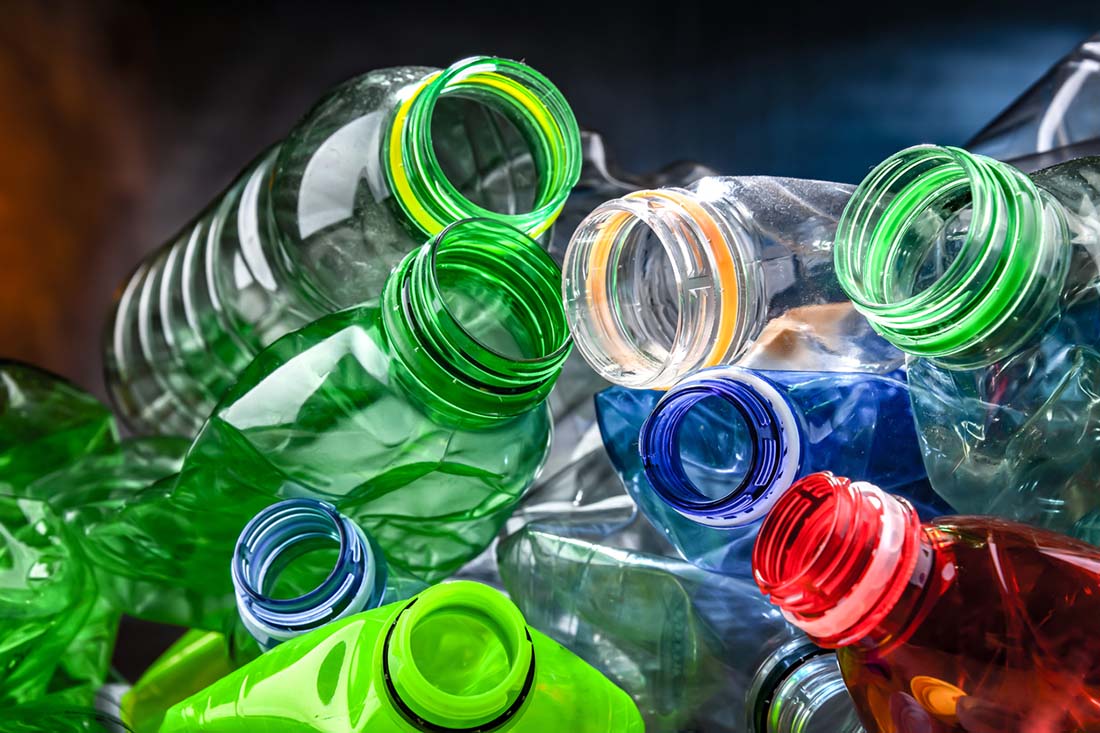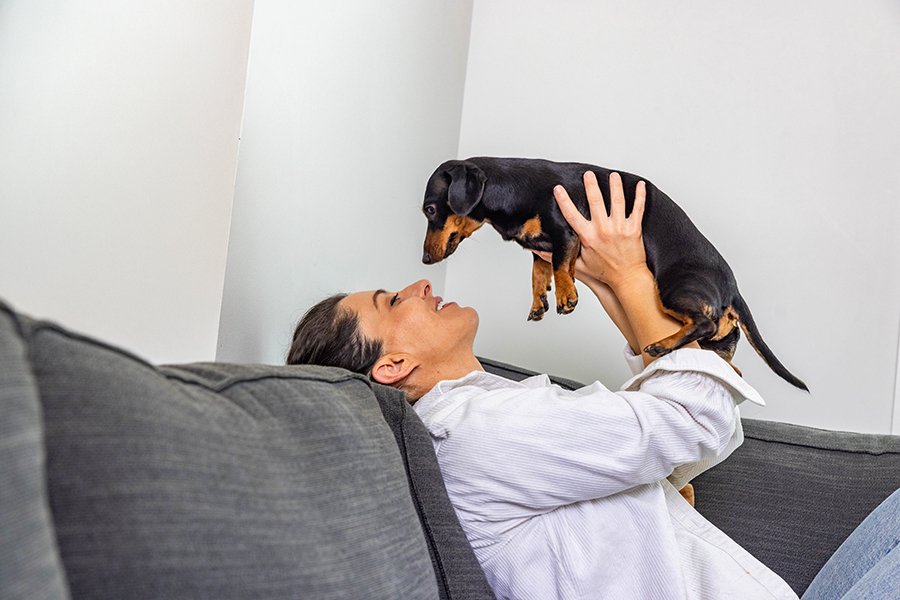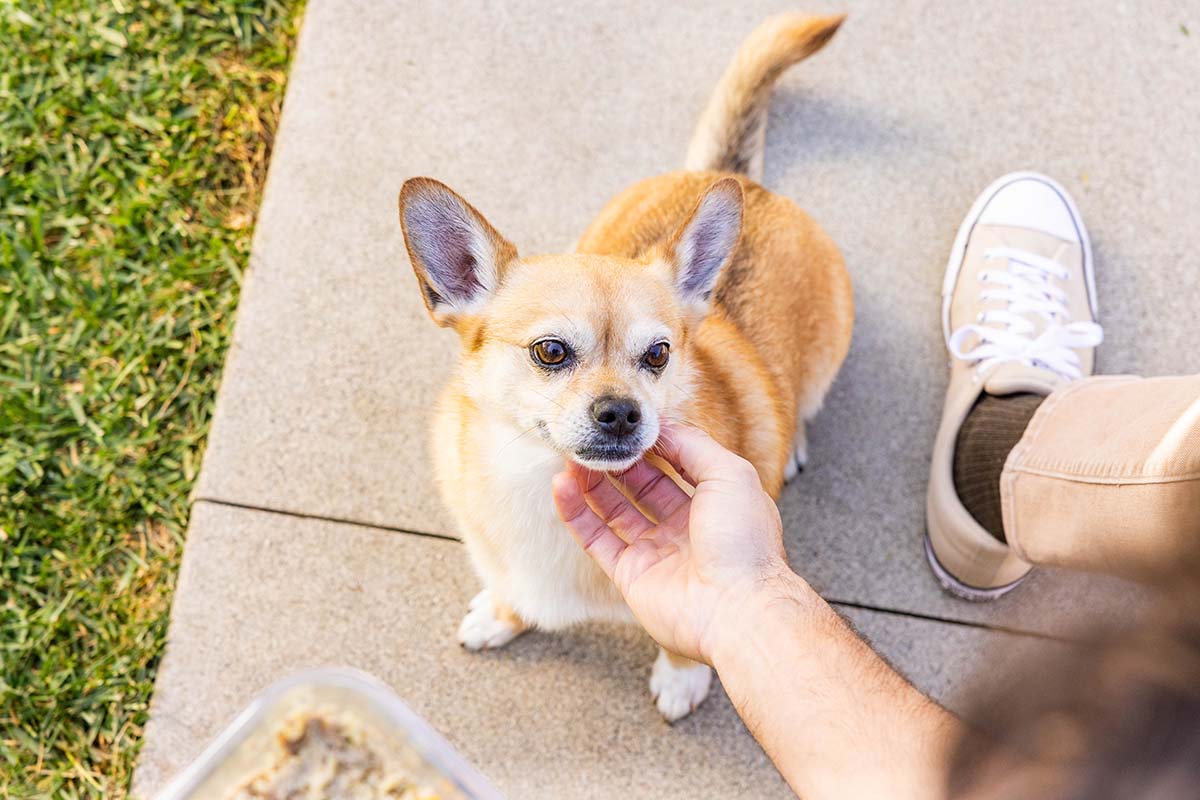BPA-Free Dog Food
Did you know that BPA is still approved by the FDA as a "food contact material"? What to know about BPA and BPA-free dog food.
We encounter hundreds of different chemicals in our everyday lives, including those that are present in our food. When buying either human food or pet food, it’s important to look at the ingredients and the packaging.
Despite recent efforts by environmentalists, the Food and Drug Administration (FDA) still approves BPA as a “food contact material,” but mindfulness around foods that may contain it is important. Here’s a look at BPA and BPA-free dog food.
What Is BPA?
BPA is short for bisphenol A, a chemical used mainly to make plastic items and food packaging. It has been widely used since the 1950s. BPA is commonly found in things like water bottles, food storage containers, receipt printer paper, and canned food packaging.
BPA can also be found in plastics used to make dog and cat toys, water bowls, food bowls, measuring cups, and food bins. Food and drinks are the main sources of exposure to BPA in both pets and people.
BPA in Canned Dog Food and Cat Food
Exposure to BPA in dogs, cats, and humans comes mainly from consuming food that contains traces of the chemical. While cat and dog food aren’t made with BPA, the lining of aluminum cans used to package pet food can contain small amounts of the food-safe material.
A 2017 study found that 81% of dog food cans tested contained BPA and 95% of cat food cans tested contained PVC (polyvinyl chloride — another plastic chemical that can cause health problems if consumed too much). Of the cans tested, all of them contained either BPA, PVC, or a combination of the two.
Does Bagged Kibble Contain BPA?
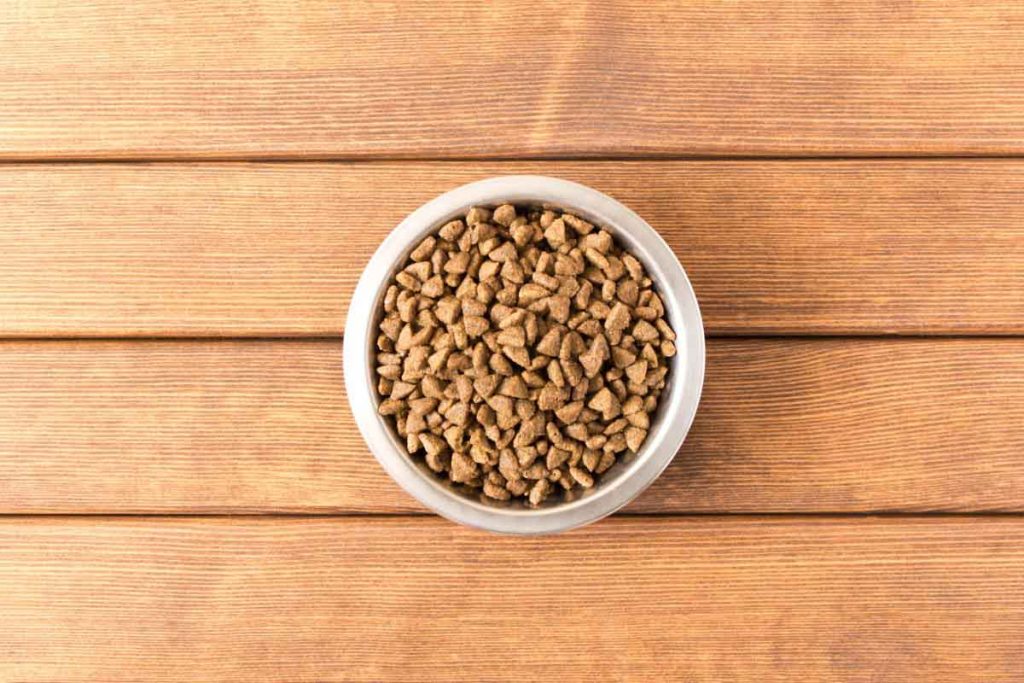
You might think that dry food is safe from absorbing harmful chemicals like BPA. Unfortunately, dry dog food can also contain traces of the pesky stuff. Since the plastic bags that package dry pet food can contain BPA, the potential exists for it to absorb into the pet food. In turn, your pet would consume it.
In fact, a study by the University of Missouri aimed to test BPA levels in dogs after consuming canned dog food. They found that the baseline samples taken from the dogs before eating canned dog food already had traces of BPA. This suggests that BPA can be present in kibble and dry dog food as well.
Is BPA Dangerous To Dogs and Cats?
Research has shown that pets who consume even small amounts of BPA over time (even as little as two weeks) can develop a series of different health problems. Exposure to BPA can affect dogs’ and cats’ fertility, increase their chance of diabetes, cause obesity, and bring about neurological problems.
A link was also found between dogs and cats exposed to BPA and hyperthyroidism. Hypothyroidism is a condition where an animal’s thyroid produces too many hormones. Not only can the condition cause quite a bit of discomfort, it can cause worse symptoms like vomiting and diarrhea.
Which Pet Foods Have BPA-Free Cans?
Pet owners are increasingly aware of what they’re feeding their precious four-legged friends, but it’s not just the ingredients to be mindful of. When choosing cat food and dog food, be sure to do your due diligence on the packaging as well.
Pet Foods That Are BPA-Free
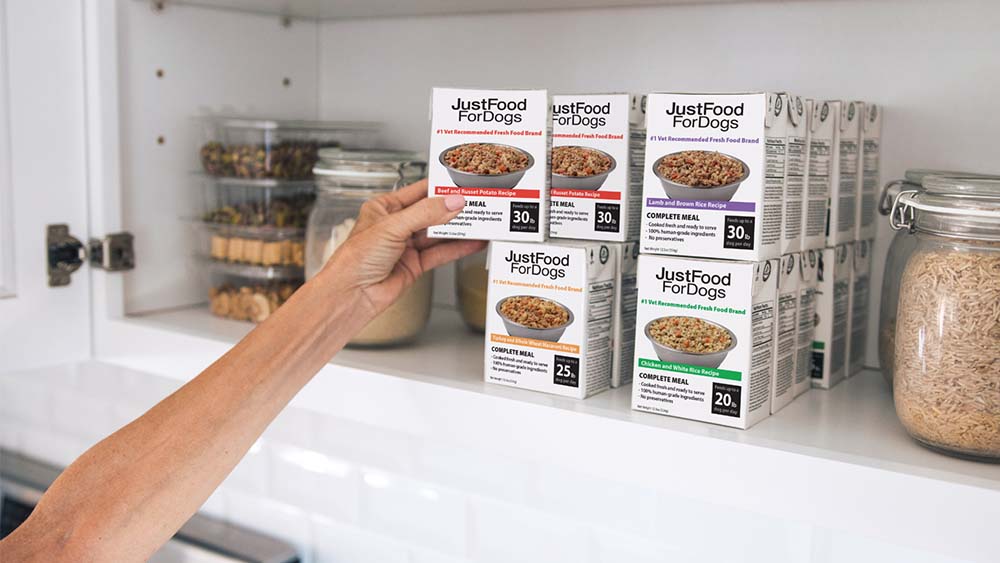
There can be some mixed information out there when it comes to pet food packaging safety. Luckily, in recent years, there are many more options for BPA-free food packaging. Some dog and cat food companies guarantee packaging that’s BPA-free and totally safe for your four-legged friends.
The team at JustFoodForDogs are pioneers in fresh pet food. They create whole-ingredient, human-grade food with superior nutrition. They use industry-leading packaging methods including products from Tetra Pak®, a Swiss company that guarantees BPA-free products.
Tetra Pak® offers a full line of environmentally friendly storage and packaging solutions. Their products are designed with convenience, easy opening, and optimizing the shelf-life of food in mind. Products from Tetra Pak® are lightweight, can be transported easily, and are fully recyclable when you’re done with them. As such, they were the ideal packaging choice for shelf-stable fresh dog food.
Which Dog & Cat Food Storage Containers Are BPA-Free?
Finding a cat or dog food storage container that’s BPA-free is one of the best ways to keep food fresh and chemicals from getting into dry food and kibble. Glass and stainless steel containers are always a BPA-free safe bet. For bigger storage bins, plastic is lightweight and more convenient.
Iris USA’s Airtight Pet Food Storage Containers
Iris USA makes pet food containers with airtight lids that are 100% BPA-free. The plastic containers are made from polypropylene. They also make other BPA-free pet products like pet food scoops, dog bowls, feeders (dispensers), collapsible litter boxes, and combo deals to purchase any other pet products you might need.
Vittles Vault’s Outback or Gamma2 Pet Food Storage Containers
All of the pet food storage containers made by Vittles Vault are made of BPS- and BPA-free, food-grade plastic. They’re stackable and suitable for indoor and outdoor use, and won’t shatter or crack when dropped. They’re waterproof, pest-proof, and easy to open with a wide screw lid.
Simplehuman’s Stainless Steel Pet Food Storage Containers
The stainless steel pet food containers made by simplehuman are durable, affordable, and contain 100% BPA-free plastic liners. The canisters use silicone to create an airtight seal, keeping your pet’s food fresh and secure.
FDA Guidelines For Safe Dog Food and Dog Treat Storage
The Food and Drug Administration (FDA) makes the following recommendations when it comes to storing dog food and dog treats.
- Store dog food in the original packaging to keep information like lot number and expiration date handy in case of an issue
- When storing bagged food, put the entire bag into the container instead of pouring food directly into it
- Make sure pet food storage containers are clean, dry, and have a lid that fits tightly
- Wash and dry pet food bowls, water bowls, and food scoops regularly
- Freeze or refrigerate leftover or fresh dog food
- Keep dog food and dog treats in a safe location to prevent your pet from overeating
This content is for informational use only and does not replace professional nutrition and/or medical advice, diagnosis, or treatment. It is not a substitute for and should not be relied upon for specific nutrition and/or medical recommendations. Please talk with your veterinarian about any questions or concerns.
